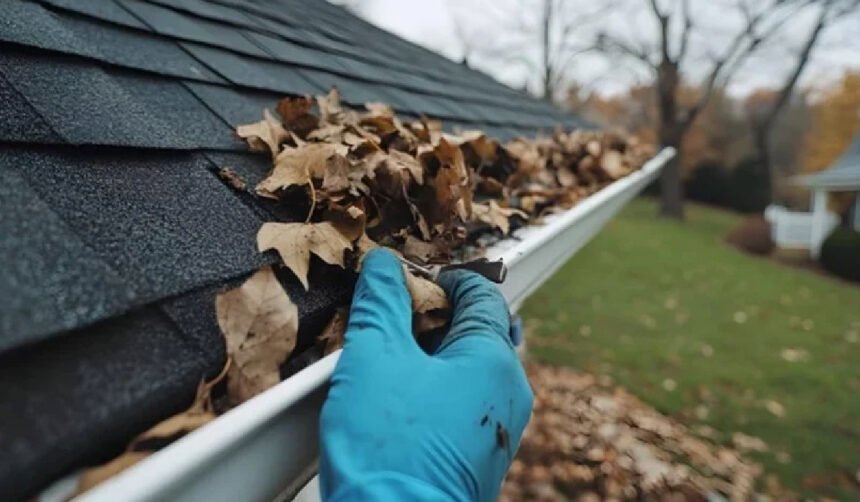Gutters are one of the most overlooked yet essential components of a home’s exterior. They play a crucial role in diverting rainwater away from your roof, walls, and foundation, preventing a host of costly problems like water damage, mold growth, erosion, and even structural instability. Despite their importance, gutters often go unnoticed until there’s a visible issue—usually when it’s too late. That’s why regular maintenance and timely gutter repair are vital for every homeowner.
This article will walk you through everything you need to know about keeping your gutters in good shape—from how they work, the most common problems, signs you need repairs, and how to decide between a DIY fix or hiring a professional. Whether you’re dealing with leaks, sagging, or clogs, proper gutter repair can save you a significant amount of money and stress in the long run.
Understanding the Role of Gutters
To appreciate the importance of gutter repair in Putnam, it’s helpful to first understand what gutters do. Installed along the edges of the roof, gutters catch and channel rainwater toward downspouts and safely discharge it away from your home’s foundation. Without a functioning gutter system, water runoff can lead to:
- Basement flooding
- Roof rot and leaks
- Siding damage and stains
- Soil erosion and landscaping damage
- Foundation cracks or settlement
A well-maintained gutter system ensures your home remains structurally sound and aesthetically pleasing. However, even high-quality gutters require upkeep and occasional repairs to function properly.
Common Gutter Issues and What Causes Them
Over time, gutters can develop a variety of problems due to weather, debris buildup, or normal wear and tear. Some of the most frequent gutter issues include:
1. Clogs
Leaves, twigs, and dirt can accumulate in gutters, obstructing the flow of water. Clogged gutters often overflow, leading to water damage on your siding and roof. Regular cleaning or installing gutter guards can help mitigate this issue.
2. Leaks and Holes
Cracks and holes may develop due to rust, corrosion, or physical damage. Leaky gutters allow water to seep into areas it shouldn’t, causing interior or exterior water damage.
3. Sagging Gutters
When gutters are weighed down by debris or standing water, they can start to sag or pull away from the house. This compromises their efficiency and can damage your fascia boards or roof edge.
4. Improper Pitching
If gutters aren’t angled correctly, water won’t flow to the downspouts, leading to pooling and overflow. Adjusting the slope can often resolve this issue.
5. Separated or Detached Sections
Strong winds, poor installation, or aging materials can cause gutter sections to come apart, interrupting water flow and causing leakage at the joints.
Each of these problems can be effectively addressed with timely gutter repair, preventing further damage and preserving your home’s condition.
Signs You Need Gutter Repair
Knowing the warning signs of gutter problems can help you act early before things escalate. Look for the following indicators:
- Water spilling over the sides during rainstorms
- Peeling paint or rust on your gutters
- Pools of water near the foundation after rain
- Mold or mildew near the roofline or basement
- Sagging or misaligned gutters
- Stains or marks on your exterior walls
If you notice any of these issues, it’s time to consider professional gutter repair or at least conduct a thorough inspection.
DIY Gutter Repair Tips
For homeowners who are handy with tools and not afraid of ladders, some minor gutter repairs can be handled without professional help. Here are a few basic fixes you can do yourself:
Cleaning Gutters
Use a ladder, gloves, and a trowel or scoop to remove debris from the gutter channel. Flush the system with a garden hose to check for proper water flow.
Sealing Leaks
Small holes or cracks can be sealed with silicone caulk or gutter sealant. For larger holes, patching with metal flashing and sealant may be necessary.
Refastening Gutters
Loose gutters can often be tightened with new hangers or screws. Be sure to check the fascia board for rot before reattaching.
Adjusting Pitch
If water isn’t draining properly, you may need to rehang the gutters with a better slope. The general rule is a ¼ inch drop for every 10 feet of gutter.
While DIY fixes can solve minor problems, more serious issues like widespread sagging, multiple leaks, or improper installation are better left to the professionals.
When to Call in a Professional
Certain situations demand the expertise of a trained technician. You should consider hiring a professional gutter service if:
- Your gutters are old and need extensive repair or replacement
- You see signs of water damage inside your home
- Gutters are pulling away from the house or falling apart
- You lack the tools or experience for safe ladder work
- You’re not confident in identifying the problem
Professional services can provide a more comprehensive and long-lasting solution. Many companies also offer warranties on their work, giving you peace of mind.
Preventive Maintenance to Avoid Gutter Repairs
Regular maintenance can dramatically extend the life of your gutters and reduce the need for repairs. Here are some simple maintenance tasks to perform throughout the year:
- Clean gutters twice a year, ideally in spring and fall
- Check for leaks or holes after storms
- Inspect hangers and fasteners to ensure they’re secure
- Install gutter guards to minimize debris accumulation
- Trim nearby trees to prevent leaves and branches from clogging your gutters
Creating a seasonal checklist for your gutter system can go a long way in preventing the need for emergency gutter repair.
The Cost of Gutter Repair vs. Replacement
One of the most common questions homeowners face is whether to repair or replace their gutters. Generally, repairs are more cost-effective in the short term, especially if the issue is minor. Common repair costs can range from $100 to $400, depending on the extent of the damage.
However, if your gutters are over 20 years old, or they have multiple recurring problems, replacement might be a better long-term investment. New gutter installations typically cost between $1,000 and $2,500, but they can significantly improve your home’s curb appeal and protect against future damage.
Consulting a gutter specialist can help you make an informed decision based on the current condition of your system.
Materials and Gutter Types
Different types of gutters may require different repair techniques. Understanding what kind of gutters you have is essential:
- Aluminum: Lightweight and rust-resistant but can dent easily.
- Vinyl: Affordable and easy to install, but prone to cracking in extreme temperatures.
- Steel: Durable but may rust over time.
- Copper: A premium option with long-lasting beauty and performance.
Seamless gutters are another popular choice that minimizes leaks. While they require professional installation, they often reduce the need for ongoing repairs.
Conclusion
A well-functioning gutter system is critical to protecting your home from water damage. Though it’s easy to ignore until a problem arises, proactive inspection, maintenance, and timely gutter repair can save you thousands in future home repair costs. Whether you’re dealing with a minor leak or a major sag, don’t delay in taking action.
By investing the time and effort into proper upkeep—or calling in a professional when needed—you’ll ensure that your gutters remain efficient, durable, and ready to handle whatever the weather throws your way.
For More Information, Visit Dotmagazine








